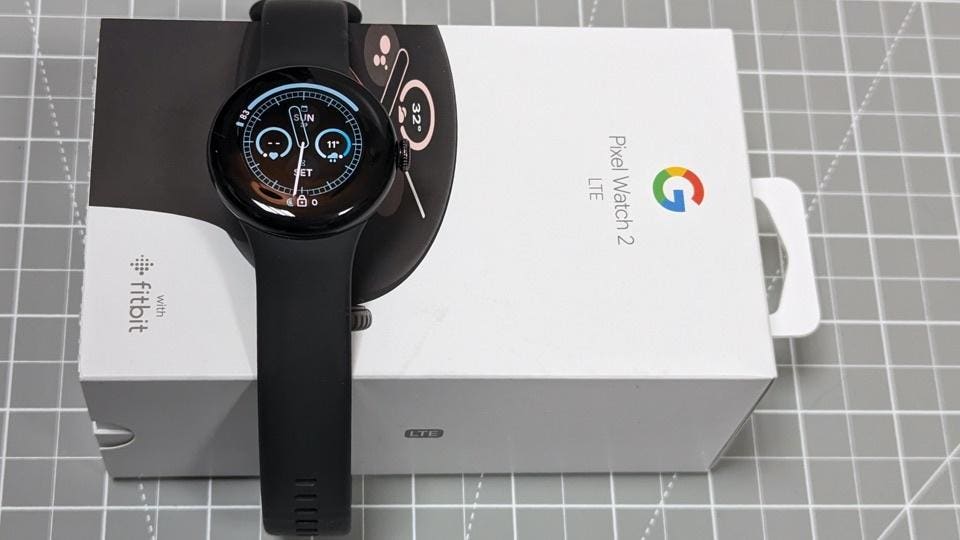Alongside the Pixel 8 and Pixel 8 Pro, Google launched its second Pixel wearable at this month’s “Made By Google” event. The Pixel Watch 2 builds on last year’s Pixel Watch, polishing its weakest areas to improve the package. Has Google done enough?
Various choices in the smartwatch and wearables world help define what kind of smartwatch you are getting. With the Pixel Watch 2, you are getting a watch that is focused on delivering a comprehensive suite of fitness and exercise profiles, a multitude of health monitoring options, and as much integration with your phone as possible,
All of that places a considerable demand on the watch’s size and power requirements. You are going to have a relatively bulky watch with limited battery life. The Pixel Watch 2 sits in the same space as the Apple Watch 9 and the Samsung Galaxy Watch 6.
For me, this makes the Pixel Watch 2 an active watch. You have to actively remember that you are using the Watch, because it needs to be charged daily. If you forget to clip on the charger at some point during daylight hours, you’re going to sport a flat watch by bedtime. Thankfully, Google has improved the battery life seen in the first Pixel Watch, and you can get a little more than 24 hours out of this watch. There is no need for topping up during the day as I did with last year’s Watch.
Google has moved away from Qi charging to a magnetic pogo-pin attachment. I found it difficult to use any charger other than the one supplied with the first Pixel Watch, meaning I always carried the charging cable when travelling. The move to a pogo pin charger won’t make a massive difference to how I use the phone. The time to charge is usually around 45 minutes, given that I rarely wait until the Watch 2 is flat. A complete cycle from empty to 100 percent around an hour and a quarter.
There are more improvements throughout the Pixel Watch 2, but improving battery life to break the one-day barrier is probably the most important.
The Pixel Watch 2 uses the Fitbit platform to track, measure, and record your workouts and health statistics. Everything syncs seamlessly between your watch and the Fitbit app on your phone and then up to your Fitbit account in the cloud. If you are only a light user of the sports tracking functions, then the automatic exercise tracking will prompt you to start recording if it senses that you have created something appropriate. Once or twice, the Watch had to remind me I was taking one of my daily walks, saving me from losing the trip in the record books.
The Pixel Watch 2 presents you with as much relevant information as possible during your exercises. For example, with four “heart rate zones” on display, you can tailor your workload to the area you want; you can also pick up notifications when you reach a zone so you are not always looking at your wrist while working out. My main one is “pace” to set up the rate cadence of walking, jogging, and running for my needs.
There’s more accuracy on these readings than the previous Pixel Watch, which is largely down to the new sensors on the watch with software and hardware both updated from last year’s model. The main addition is the multi-path heart rate sensor. In essence, this uses points to measure your pulse under the watch, and with different angles and areas, the multiple signals can be combined to provide a more accurate reading than a single sensor.
The heart rate sensor is one of many that gather information throughout the day. Google sees the Pixel Watch 2 as a device to help monitor general well-being, stress tracking, mood logs, and checking in on your mental state. It’s not entirely accurate, but it’s certainly on par with other devices in this price range.
I feel that the Pixel Watch 2 is targeted at consumers who need something to help them stay in touch with their body, track exercise and routines, and not provide a ridiculous amount of data. Other smartwatches and tracking apps offer that in-depth look at your body. The Pixel Watch 2 is a touchstone to tell you about the big ticket items. For most people, I think that’s enough.
The Pixel Watch 2 runs Wear OS, which has been updated to version 4. Much of the interface and feel introduced in Wear OS 3 on the first Pixel Watch has been carried over to the latest version. There’s more app support (such as direct support for WhatsApp, now available on your wrist)
I do like the practicality of safety check. You can start up this feature quickly, and after a time you’ve set, the Watch will ask you to check in with an on-screen notification; if there’s no response, the app will alert a preset list of contacts. It’s a wellness feature for different reasons, but one that is well worth using in the right situations
The most significant contribution to the Pixel Watch 2 experience is the move to Qualcomm’s W5 Gen 1 chipset. Everything feels a little bit smarter, a little bit faster, and a little less laggy than the first watch. Two new first-party apps are in the mix, so we have dedicated support for Gmail and Google Calendar in the watch. With a small display and limited options (a small touchscreen for taps and the digital crown for scrolling), these are essentially “let’s just check in on things” rather than full-blown PDA-styled apps.
There are a number of minor quality-of-life improvements. One I want to pick out—at least to someone who switches phones a fair bit—is the ability to back the Pixel Watch 2 up to the cloud, making it easier to move phones and bring your wearables setup with you.
There’s more app support outside of Google’s apps as well. I wonder how many of these big-ticket items are here because the addressable audience has grown or because Google has asked them nicely to support the project?
The Pixel Watch 2 is all about being a companion to you and your smartphone. It watches over what’s happening on your phone and gives you enough details to deal with notifications and sort through the big-ticket items of information. It keeps an eye on your body and lets you know what’s right and wrong without going into ridiculous levels of detail.
For me, that’s as it should be for a wearable. When you need it, you are reminded it is there; when you don’t, it fades into the background. That’s why raising the battery life from the first Pixel Watch to go past the “active for 24 hours mark” was the critical upgrade that needed to happen.
Sure, I would prefer to see a week of battery life to match the fitness bands on the market, but the capabilities of the Pixel Watch 2 far outstrip those wearables, which means the compromise that needs to be made is in the battery. Once a day charging, with half a day of grace, lifts the Pixel Watch 2 from last year’s “awkward” level to one of “as you would expect.”
I keep returning to the idea that this is not a second Pixel Watch, but the Pixel Watch 1.5. It’s broadly the same watch as last year, with the same single size on offer, the same watch straps, controls, companion app, and user interface. The tweaks all fix issues present last year or tighten up the accuracy of the information the fitness side of the wearable collects.
After last year’s final draft, I’d argue that this is the final product. Google wanted to show the Android world what it thinks a smartwatch should be. This is it.
Now, lets see if that’s what the market wants.
Launched alongside the Pixel Watch was the Pixel 8 Pro. Read my review here…
Read the full article here





